Respiration
Respiration
All animals respire.
A lot of people think respiration means breathing - this is not true. Respiration is a chemical reaction. It occurs in every cell in your body.
What is respiration?
During normal human respiration, glucose (a type of sugar that you get from food) reacts with oxygen to produce energy. The energy is needed for growth, repair and movement. Water and carbon dioxide are bi-products of respiration - they need to be excreted.
Why do people get respiration confused with breathing?
Respiration usually requires oxygen, and animals get their oxygen by breathing.
To understand respiration you may need to find out more about cells and how they work.
Do you know what the major organelles of the cell are called, and can you find which organelle is responsible for respiration?
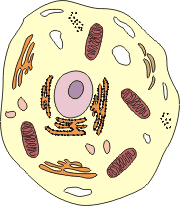
The animal cell
About this resource
Science topic: Animals, including humans
Key Stage: KS2, KS3
Type: Information
Keywords: respiration, energy, breathing in animals, lungs, glucose, oxygen, carbon dioxide, respiratory adaptations
Animal cell structure
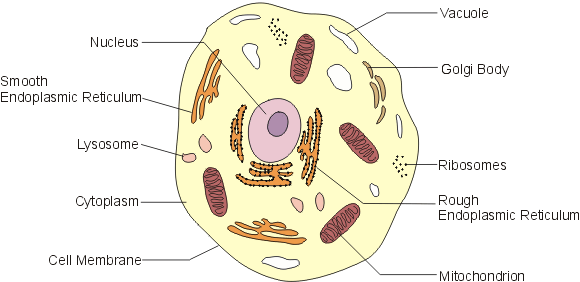
When you look inside a cell you see many different structures called organelles.
Each organelle has a function of its own, allowing the cell to live and work within our bodies.
The nucleus
The nucleus is the largest organelle within animal cells. The nucleus controls cell activity. It also contains the cell's chromosomes. The chromosomes are made up of the genetic information - the DNA - that makes you who you are.
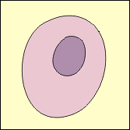
Vacuoles
Vacuoles are storage areas. They are surrounded by membranes and filled with liquid or solid material.
Vacuoles are much bigger in plant cells.

The Golgi body
The Golgi body (or the Golgi apparatus) makes some of the chemicals produced within the cell. It also collects and packages chemicals for transport to different parts of the cell.
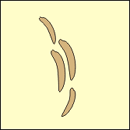
Ribosomes
There are thousands of ribosomes inside a cell. They are found in the cytoplasm, in mitochondria and they make endoplasmic reticulum rough.
Ribosomes make proteins.
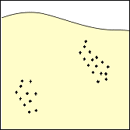
Rough endoplasmic reticulum
Endoplasmic reticulum is made up of a network of membranes folded into a series of sheets or tubes. Rough endoplasmic reticulum is covered in ribosomes, giving it a grainy look. Proteins are made here and are packaged up for transport around, or out of, the cell.
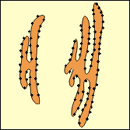
Smooth endoplasmic reticulum
Endoplasmic reticulum is made up of a network of membranes folded into a series of sheets or tubes.
Smooth endoplasmic reticulum has different functions in different cells.

Mitochondria
Mitochondria are very important organelles - it is in the mitochondria that respiration occurs. There are thousands of them in every cell in your body.
They often called the 'power houses' of the cell.
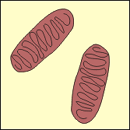
The cell membrane
The cell membrane packages up the cell and all its organelles.
Water, energy, and nutrients enter the cell, and waste material leaves the cell through the cell membrane.
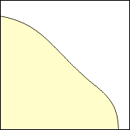
The cytoplasm
The cytoplasm of a cell is not really an organelle - it is the fluid the organelles are bathed in.
It contains proteins, sugars and other substances that help the cell function properly.

Lysosomes
Lysosomes contain enzymes that break down cell material (if these enzymes were not contained within lysosomes, they would eat away the cell).
When organelles have 'died' they are surrounded by the lysosome and broken down by the enzymes.

Most vertebrate animals that live on land have lungs.
When we breathe in, the muscle below the rib cage - called the diaphragm - is pulled down, and air gets sucked into the rib cage, filling the lungs.
Blood cells circulating through tiny blood vessels near the lungs pick up oxygen and carry it around the body to the sites of respiration. Air is then forced out of the lungs as the diaphragm bows upwards.
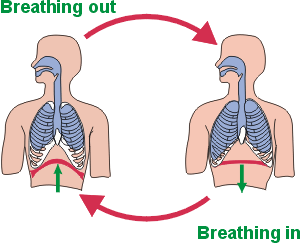
Do all animals breathe in the same way?
Birds are different from humans in many ways.
As you probably know, they fly, and their bodies are well adapted for flight. Their lungs are very efficient: they take in much more oxygen per breath than other animals do.
Because they get this extra oxygen they have lots of energy to direct to the flight muscles in their wings - they can flap away for hours!
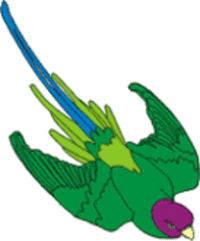
Fact File
Name: Plum headed parakeet
Group: Birds
Country of origin: India
Some adaptations to flight:
- Feathers
- Efficient lungs
- Lightweight skeletons
- Beaks - no teeth makes birds' heads lighter
Other ways to breathe
Frogs and toads have lungs, but when they are in water they can also breathe through their skin. Some other species of amphibians have all lost their lungs altogether through evolution, and they only breathe through their skins!
Some other animals, such as fish, don't have lungs at all. Fish breather through gills, which are special organs that can extract the oxygen directly from water.
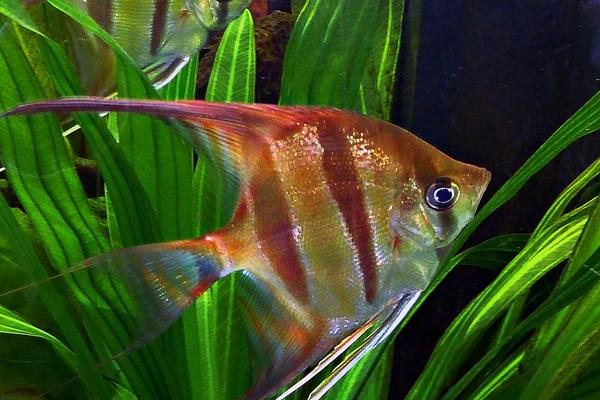
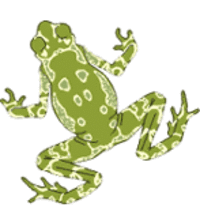
Fact File
Name: Yellow harlequin toad
Group: Amphibians
Country of origin: Guyana
Although amphibians can live on land, they always need to be close to water.
- They have a moist skin that can dry out
- They lay their eggs in water
- They have webbed feet and are good swimmers


